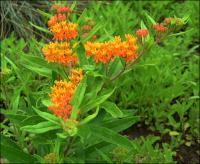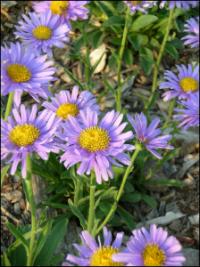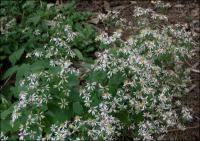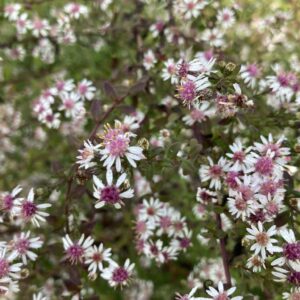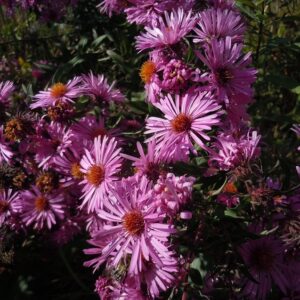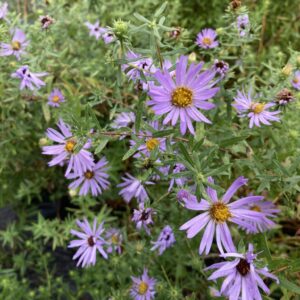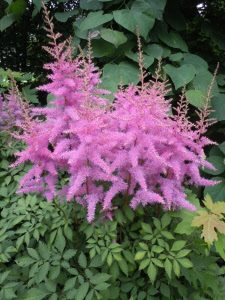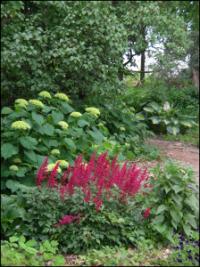Plants for Butterflies and Other Pollinators
Showing 25–32 of 223 results
-
Asclepias tuberosa Butterfly weed, Pleurisy-root Z 4-9
Gorgeous - July - September bright orange cymes
OUT OF STOCK
Gorgeous – July – September bright orange cymes
Size: 2-3' x 12"
Care: Sun in moist well-drained to dry soil
Native: East and south North America, Wisconsin native
Wildlife Value: Host for Monarch caterpillars and its nectar is a favorite for 13 different butterflies: 4 Swallowtails, 2 Fritillaries, Checkered white, Spring azure, Small copper, Sachem, Monarch, and Coral and Gray hairstreaks. Attracts Ladybugs that eat many insect pests.
Awards: Great Plants for Great Plains; Perennial Plant Assn. Plant of the Year 2017.Named after Asclepias, a Greek god of medicine. Omaha Indians ate the raw root to cure bronchial and pulmonary ailments, their Shell Society was the authorized guardian of the plant, taking 4 days to dig, prepare and distribute the root. Most important medicine for Menominee Indians. The Iroquois smashed roots on legs to impart strength to runners. Navajo cured coyote bites and flu with Butterfly weed. Millspaugh said used as “subtonic, diaphoretic, alternative, expectorant, diuretic, laxative, escharotic, carminative, anti-spasmodic, anti-pleuritic, stomachic, astringent, anti-rheumatic, anti-syphilitic and what not?” 1st collected by Rev. John Banister in colonial Virginia c. 1680. A gunman mistakenly shot and killed him while he collected plants. Used by natives for Bloody Flux; the Root must be powdered and given in a Spoonful of Rum, or rather as the Indians give it, bruise the Root, and boil it in Water, and drink the Decoction: Pehr Kalm saith it is excellent for the hysteric Passion.” HoChunk placed masticated root into wounds. Cultivated by Jefferson. Pressed specimen in Emily Dickinson’s herbarium.
-
Aster alpinus Alpine Aster Z 5-7
Frilly little daisies, May-June, lavender, pink or white
OUT OF STOCK – EMAIL FOR AVAILABILITY
Frilly little daisies, May-June, lavender, pink or white. Plant where they’ll be seen in the front of the garden. Also good in rock gardens
Size: 6-10" x 18"
Care: Full sun well-drained soil. Drought tolerant & tolerant of Black walnut toxins
Native: Rockies
Wildlife Value: attract butterfliesAster means star referring to the flower form. Collected by Drummond in the Rockies by 1800.
-
Aster divaricatus syn. Eurybia divaricatus White wood aster Z 4-8
Loose white flower clusters from August to October
Loose white flower clusters from August to October
Size: 12" x 12" and spreading
Care: part shade to shade in moist well-drained to dry soil.
Native: East No. America Quebec to Alabama and west to Ohio
Wildlife Value: Aster species are nectar sources for many butterflies – Checkered white and Checkered skippers, Spring azure, Pearl crescent, Buckeye, Painted lady, Fiery skipper, Sachem, Sleepy orange, Silver-spotted skipper and Monarch.
Awards: Recipient Great Plant Pick Award from Elizabeth Carey Miller Botanical Garden.Sold in America’s 1st plant catalog, Bartram’s Broadside, 1783. Gertrude Jekyll, mother of the perennial border, often used Aster divaricatus in combination with Bergenia. Collected by John Bartram before 1776.
-
Aster laterifolius ‘Horizontalis’ syn Symphyotrichum laterifolius ‘Horizontalis’ Horizontal Calico Aster Z 4-8
Unique horizontally branching aster covered in small pink and white daisy-like flowers with dark pink centers blooming in late summer-fall. Foliage turns copper/purple in fall.
OUT OF STOCK
Unique horizontally branching aster covered in small pink and white daisy-like flowers with dark pink centers blooming in late summer-fall. Foliage turns copper/purple in fall.
Size: 24” x 24”
Care: full sun to part shade in well-drained soil
Native: Eastern and Central North America
Wildlife Value: attracts bees and butterflies. Deer resistant, Black walnut resistant.
Awards: RHS Award of Garden MeritFirst described by French botanist René Desfontaines (1750-1802). Harvard botanist Asa Gray named the variety in 1895.
-
Aster novae angliae syn. Symphyotrichum New England Aster Z 4-8
August – October, classic violet, pink or magenta daisies
August – October, classic violet, pink or magenta daisies
Size: 3-4' x 24"
Care: Full sun dry to moist soil. Heat and drought tolerant.
Native: Vt to Alabama, west to N. M., Wisconsin native
Wildlife Value: Nectar source for many butterflies - Checkered white and Checkered skippers, Spring azure, Pearl crescent, Buckeye, Painted lady, Fiery skip butterfly, Sachem, Sleepy orange, Silver-spotted skipper and Monarch. Host for caterpillars Wavy-lined emerald moth.Aster means star, referring to the flower’s form. For the Cherokee New England aster tea cured fevers and diarrhea. Roots remedied pain and inflammation of the nose and throat. Introduced to garden cultivation by John Tradescant the Younger (1608-1662) in 1637 when he sent it to England where upon borders of New England aster became common. Washington grew New England Aster at Mount Vernon.
-
Aster oblongifolius syn. Symphyotrichum oblongifolium, Aromatic aster Z 3-8
Purplish blue daisies with yellow center blooming in September to November. Good, bushy mound shape.
Purplish blue daisies with yellow center blooming in September to November. Good, bushy mound shape.
Size: 1-2’ x 1-3’
Care: sun to shade in well-drained to moist well-drained soil
Native: Pennsylvania to No. Carolina west to Wyoming & Texas, Wisconsin native
Wildlife Value: Bees collect pollen and nectar from it. Medium sized butterflies collect its nectar. Its leaves support Silvery checkerspot and some moth caterpillars, Deer resistant.
Size: Navajo made a decoction of this to protect against witches.Meriwether Lewis collected this on the Expedition September 21, 1804, the day after nearly being swept away while Lewis and the Corps of discovery slept on the eroding sandbar, near the Big Bend of the Missouri River in South Dakota. 1st described by planthunter Thomas Nuttall in 1818(1786-1879).
.
-
Astilbe andresii ‘Amethyst’ Z 5-8
pink plumes flowering in July, with oxblood tinged foliage
OUT OF STOCK
Three foot tall pink plumes flowering in July, with oxblood tinged foliage
Size: 36"x 24"
Care: sun to part shade, moist soil essential. Immune walnut toxicity
Wildlife Value: attracts butterfliesAstilbe is Greek from a meaning “without” and stilbe meaning “lustre” referring to the fact that the leaves are not shiny. Early hybrid by George Arends, nurseryman from Ronsdorf, Gemany (1862-1952).
-
Astilbe andresii ‘Fanal’ Z 4-8
Marlboro red plumes in June
OUT OF STOCK
Striking Marlboro red plumes in June
Size: 24"x 18"
Care: sun to part shade, moist soil. Immune walnut toxicity
Wildlife Value: attracts butterflies
Awards: Royal Horticultural Society Award of Garden MeritAstilbe is Greek from a meaning “without” and stilbe meaning “lustre” referring to the fact that the leaves are not shiny. Cross of A. japonica and A. davidii made by Arends, nurseryman from Ronsdorf, Gemany (1862-1952), in 1930.

